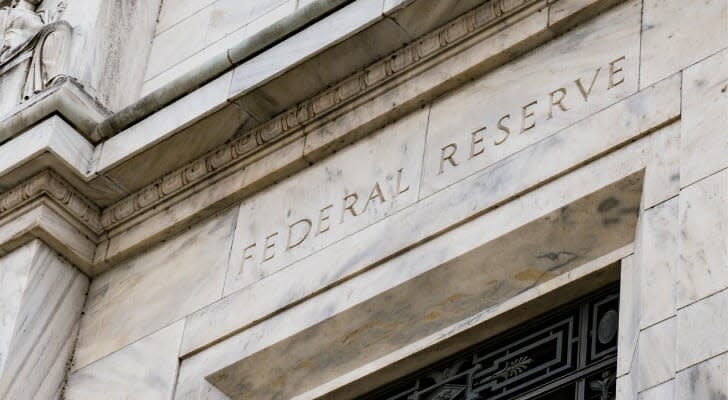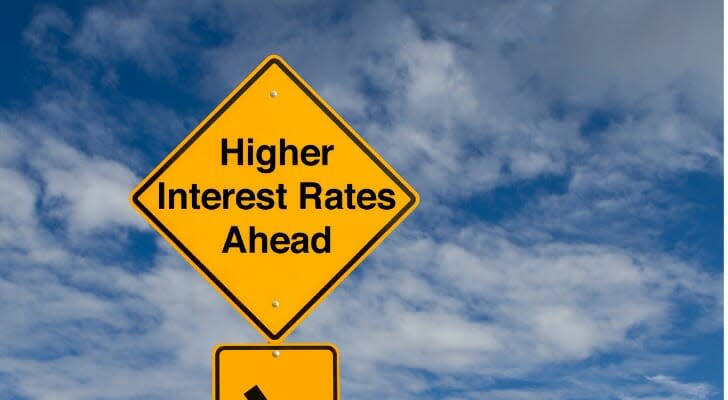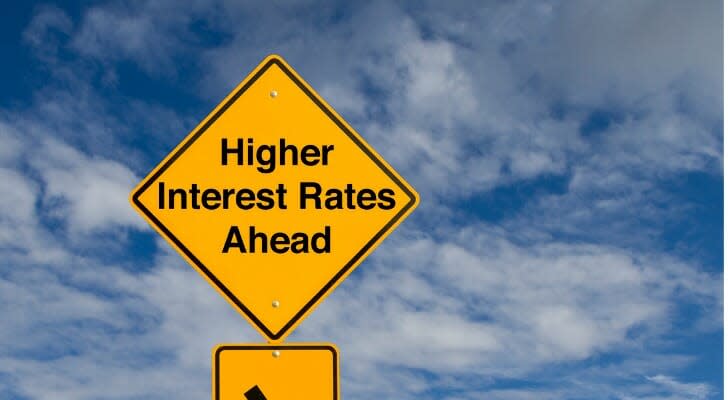What Retirees Need to Know

The US Federal Reserve hiked another 25 basis points on Wednesday amid the recent collapse of two banks.
The decision to raise the federal funds rate to a target range of 4.75% to 5% follows the collapse of Silicon Valley Bank and Signature Bank earlier this month. Some speculated that the central bank would end its fight against inflation or even cut interest rates amid the turmoil in the banking sector. Instead, the hawkish Fed went ahead with another rate hike – the ninth straight hike since March 2022.
A financial advisor can help you respond to changes in interest rates and other financial developments. Find a fiduciary advisor today.
The move to raise the federal funds rate has far-reaching implications across the economy, particularly for retirees and those on fixed incomes. Here’s what you should know about Wednesday’s rate hike.
The basics of rate hikes

The Federal Funds Rate is the target rate at which banks lend and borrow money from each other. The Federal Funds Rate is set by the Federal Open Market Committee (FOMC) and affects everything from mortgage rates and car loans to the interest rate on your credit card.
When interest rates rise, borrowing becomes more expensive – for both consumers and businesses. This usually leads to a slowdown in economic growth. But that’s a worthwhile sacrifice in the eyes of the Fed, which is using rate hikes to cool the economy and curb persistent inflation.
While the central bank previously said inflation was “temporary” and would eventually subside, it has had to escalate the fight against inflation. In just over a year, the Fed has sharply raised the target range for the federal funds rate from 0-0.25% to 4.75-5%.
The consumer price index for all urban consumers (CPI-U) – the benchmark against which inflation is measured – increased by 6% from March 2022 to February 2023. While inflation has fallen since hitting a 40-year high of 9.1% in June, it is still well above the Federal Reserve’s 2% target, necessitating the Fed’s dovish stance.
As a result, Federal Reserve Chairman Jerome Powell told the Senate Banking Committee on March 7 that more aggressive rate hikes may be needed. But that was before the collapse of Silicon Valley Bank and Signature Bank, leading some to speculate that the Fed might pause or even cut interest rates.
How the recent rate hike is affecting retirees

Here’s a look at some of the implications of Wednesday’s rate hike for retirees and others on fixed income assets:
Cash becomes more valuable
When interest rates rise, banks can offer higher annualized returns (APYs) on savings accounts and other deposits. While inflation reduces the purchasing power of cash, interest rate hikes mean that cash reserves generate more interest than they would otherwise. This is particularly valuable for retirees, who are typically advised to have six months to two years’ worth of cash on hand to cover their immediate and short-term living expenses. A rate hike means cash will work even harder. In fact, some banks offer high-yield savings accounts with interest rates in excess of 4%.
I Bonds and TIPS can earn less interest
Series I Savings Bonds and Treasury Department Inflation-Linked Securities (TIPS) are two types of bonds issued by the US government that are intended to provide protection against inflation. If inflation falls in response to Wednesday’s rate hike — or subsequent rate hikes — those assets won’t pay out as much.
Twice a year, the Treasury adjusts the amount of interest I-Bonds earn and links those increases or decreases to the CPI-U. At the last interest rate adjustment in November, I-bond rates rose from 9.62% to 6.89%. The next interest rate adjustment will take place on May 1st.
TIPS work a little differently. Instead of the interest rate rising and falling with the CPI-U, the present value of a TIPS bond changes with inflation.
Will Stocks Fall?
It’s unclear exactly how the recent rate hike will affect stocks in the coming days and weeks. In general, however, stocks tend to lose value when interest rates rise. That played out on Wednesday as the big three indices — the Dow Jones, NASDAQ and S&P 500 — each declined more than 1.60%. In general, higher interest rates slow economic growth and make it more difficult for companies to borrow money.
It is also unclear whether there will be further rate hikes. In a statement on Wednesday, the Fed said “additional monetary tightening may be appropriate” but did not specifically state that interest rates will continue to rise.
bottom line
The US Federal Reserve hiked interest rates another 25 basis points on Wednesday, raising the target range for the federal funds rate to 4.75% to 5%. For retirees, that means cash deposits are likely to continue to earn more interest. Retirees with Series I Savings Bonds should keep an eye on the Treasury Department’s next rate hike in May to see how Wednesday’s rate hike could affect their investments. Meanwhile, stocks fell on Wednesday in the wake of the Fed’s announcement.
Anti-Inflation Tips
-
A financial advisor can help you manage your investments to keep up with inflation. Finding a financial advisor doesn’t have to be difficult. SmartAsset’s free tool puts you in touch with up to three verified financial advisors operating in your area, and you can interview your appropriate advisor for free to decide which one is right for you. If you’re ready to find an advisor who can help you achieve your financial goals, start now.
-
If you want to protect your portfolio from inflation, you should consider several asset classes. Real or tangible assets such as commodities, real estate, and infrastructure all tend to outperform other asset classes when inflation rises.
-
SmartAsset recently analyzed numbers from sample retirement portfolios and found how much inflation can eat into a person’s savings. While a $500,000 portfolio might last 22 years for a retiree if inflation stays at 2%, the same portfolio would only last 15 years if inflation is 6%.
Disclosure: SmartAsset has a client relationship with Silicon Valley Bank.
Photo credits: ©iStock.com/pabradyphoto, ©iStock.com/Tinpixels, ©iStock.com/Tinpixel
The Fed’s Latest Rate Hike: What Retirees Need to Know post appeared first on the SmartAsset blog.